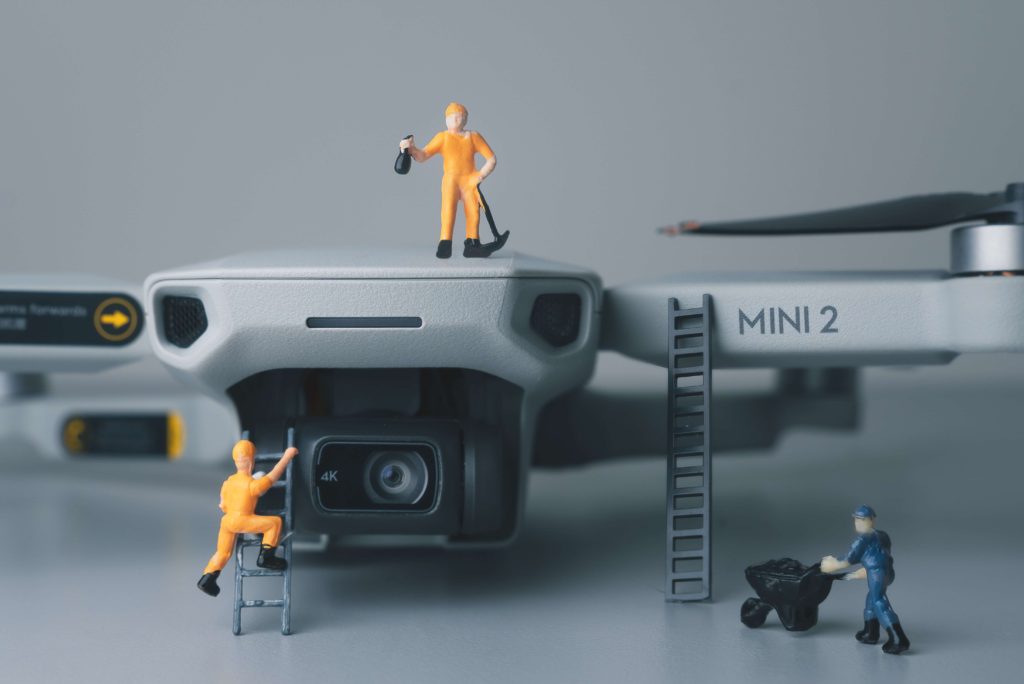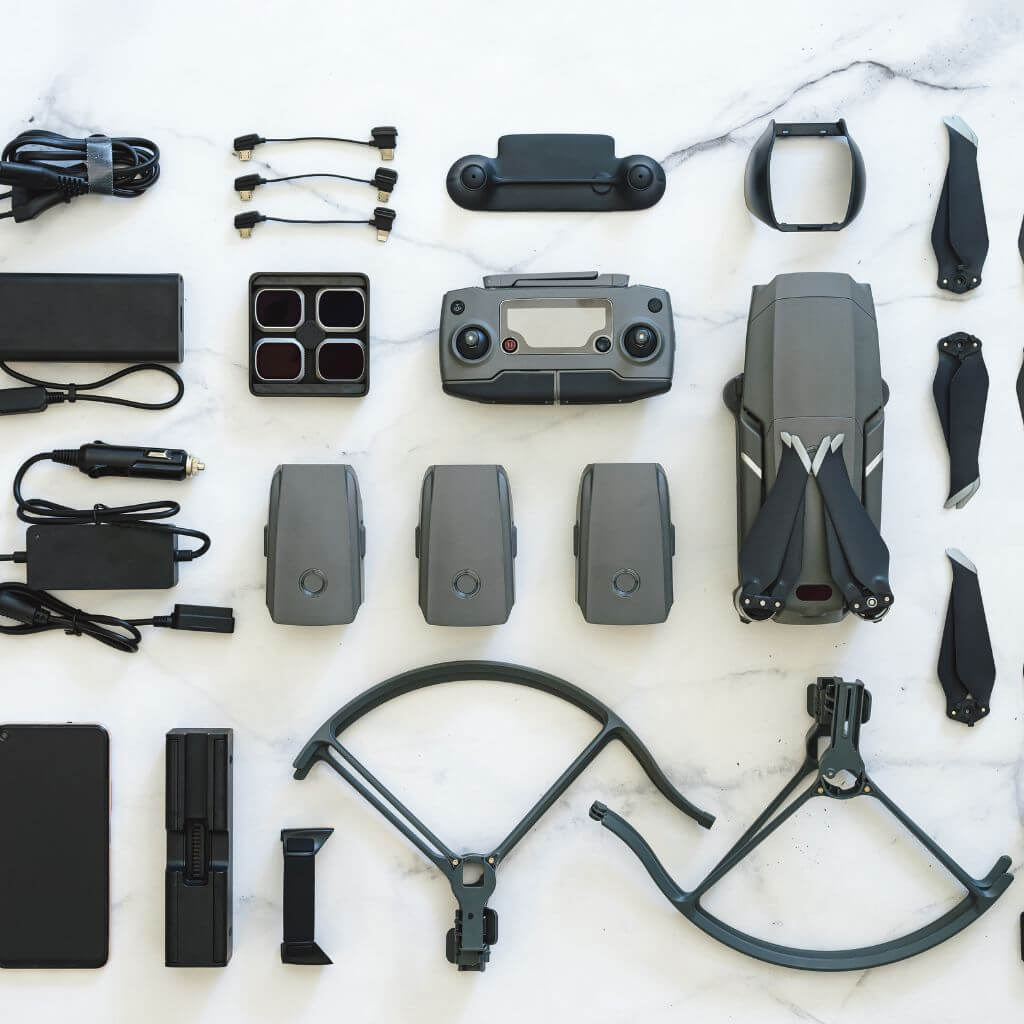Welcome to “Drone Maintenance 101: Essential Tips for Keeping Your Drone in Top Shape.” As a drone enthusiast, it’s crucial to understand the importance of proper maintenance to ensure your drone’s longevity and optimal performance. In this comprehensive guide, we’ll delve into the essential tips and techniques that will help you keep your drone in excellent condition. From pre-flight checklists to cleaning and storage, we’ll cover all aspects of drone maintenance to maximize your flying experience.
Table of Contents:
- Introduction
- Pre-Flight Checklist: Ensuring a Safe Flight
- Battery Care: Extending Lifespan and Performance
- Propeller Maintenance: Smooth and Reliable Flight
- Camera and Gimbal Care: Capturing Stunning Footage
- Frame Inspection and Cleaning: Maintaining Structural Integrity
- Firmware Updates: Staying Up-to-Date
- Storage and Transportation: Protecting Your Drone
- Conclusion
- FAQs
Pre-Flight Checklist: Ensuring a Safe Flight
Before every flight, it’s essential to perform a pre-flight checklist to ensure your drone is in optimal condition and safe to operate. This checklist includes.
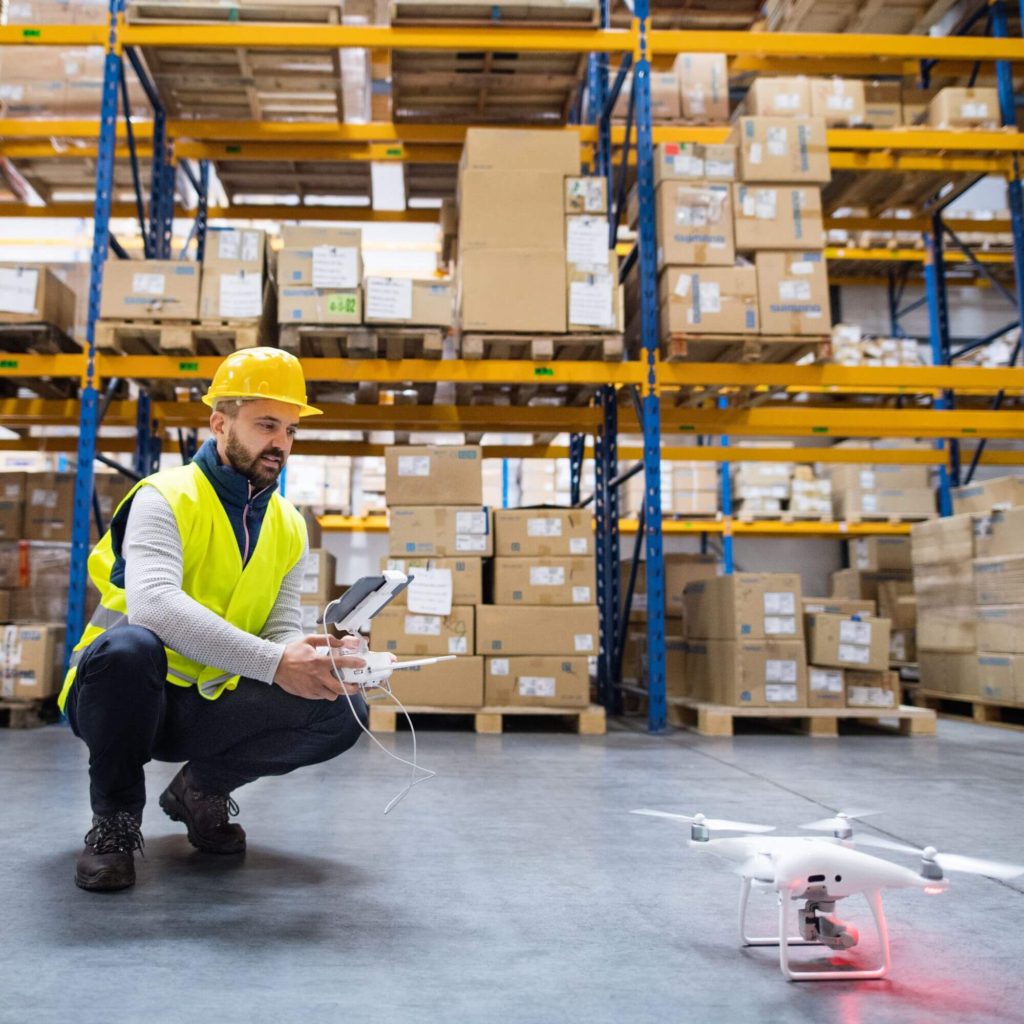
- Battery Check: Verify that the battery is fully charged and securely attached.
- Propeller Inspection: Examine each propeller for any signs of damage or wear.
- Controller Connection: Ensure a stable connection between the controller and the drone.
- GPS and Compass Calibration: Calibrate the GPS and compass to ensure accurate positioning.
- Flight Modes and Settings: Verify that the flight modes and settings are correctly configured.
- Obstacle Detection System: Test the obstacle detection system, if available, to ensure it’s
Battery Care: Extending Lifespan and Performance
Proper care of your drone’s batteries is crucial for maximizing their lifespan and maintaining optimal performance. By following these essential battery maintenance tips, you can ensure that your drone’s batteries stay in excellent condition
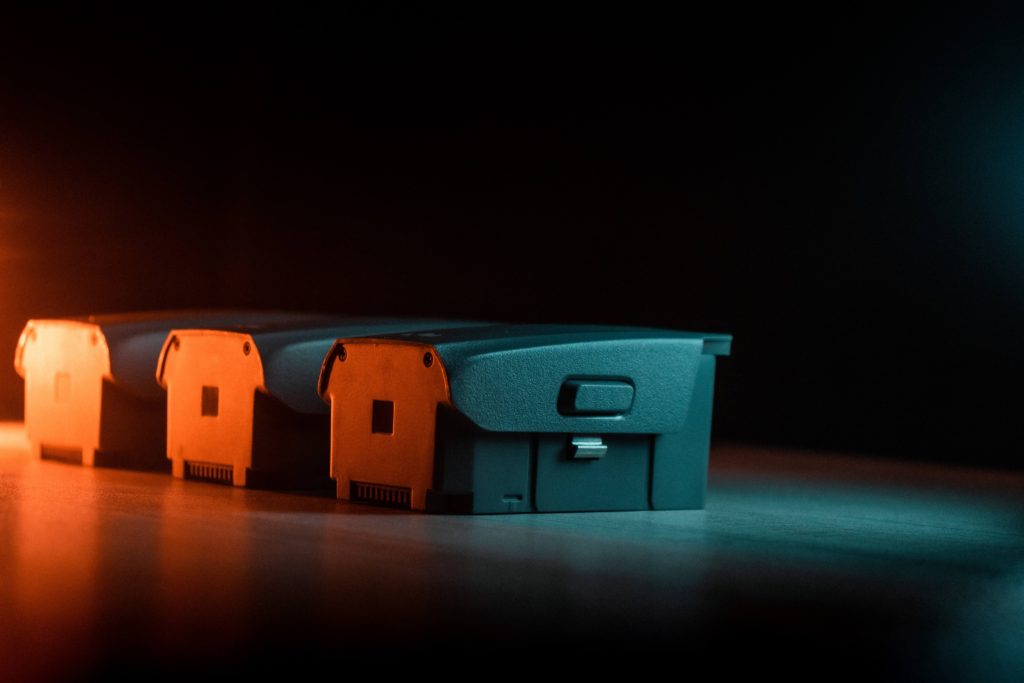
- Charging: Always use the manufacturer-recommended charger when charging your drone’s batteries. Using an incorrect or incompatible charger can lead to damage or reduced battery life. Additionally, avoid overcharging the batteries, as it can cause overheating and affect their performance. It’s important to monitor the charging process and never leave the batteries unattended while charging. Once the batteries are fully charged, disconnect them from the charger promptly.
- Discharging: Regularly discharging the batteries partially helps maintain their capacity over time. Lithium-ion batteries, commonly used in drones, benefit from periodic discharge cycles. However, avoid fully draining the batteries, as it can lead to irreversible damage. Follow the manufacturer’s recommendations for discharging the batteries and ensure you strike a balance between using the battery’s capacity and not completely depleting it.
- Storage: If you plan to store your drone’s batteries for an extended period, it’s essential to prepare them appropriately. Before storing, ensure the batteries are charged to around 50% of their capacity. Storing batteries with a full charge or completely discharged can lead to capacity loss or degradation. Find a cool, dry place to store the batteries, away from direct sunlight or extreme temperatures. Ideally, use a dedicated battery storage case or bag to protect them from physical damage and potential exposure to moisture.
- Transportation: When transporting your drone, it’s important to take precautions with the batteries. Remove the batteries from the drone and pack them separately in a fireproof bag or container. This practice helps mitigate the risk of accidental battery discharge or fire hazards. It’s advisable to carry the batteries in your carry-on luggage when traveling by air, as checked baggage may be subject to specific restrictions or regulations.
Propeller Maintenance: Smooth and Reliable Flight
Proper maintenance of your drone’s propellers is crucial for ensuring a smooth and reliable flight experience. The propellers play a significant role in generating lift, stability, and maneuverability. Follow these essential propeller care tips to keep your drone in optimal condition:
- Inspection: Before each flight, take a moment to visually inspect the propellers. Look for any cracks, chips, or signs of wear. Even small damages can affect the aerodynamic performance and balance of the propellers, potentially leading to vibrations or unstable flight. If you notice any damage, it’s crucial to replace the propellers before flying. Regular inspection helps identify potential issues and ensures the propellers are in top shape for a safe and efficient flight.
- Replacement: If you find any damaged or worn-out propellers during the inspection, it’s essential to replace them promptly. Using damaged or degraded propellers can compromise flight stability and put your drone at risk. Always opt for high-quality, manufacturer-recommended replacements to ensure compatibility and performance.
- Balance: Propeller balance is crucial for smooth operation and reducing vibrations during flight. Even minor imbalances can cause disturbances that affect stability and overall performance. To ensure proper balance, use a propeller balancer, which helps identify any imbalance and allows you to adjust the propellers accordingly. Balancing the propellers enhances their efficiency and reduces stress on the drone’s motors.
Note: To enhance your drone’s performance and safety, consider investing in spare propellers, such as this Propeller Set, so that you have replacements readily available whenever needed.
Camera and Gimbal Care: Capturing Stunning Footage
If your drone is equipped with a camera and gimbal system, taking care of them is essential to capture stunning aerial footage. Here’s how to maintain your camera and gimbal:

- Cleaning: Use a microfiber cloth or lens cleaning kit to gently clean the camera lens and gimbal. Steer clear of harsh chemicals or abrasive materials.
- Calibration: Regularly calibrate the gimbal to ensure stable footage and accurate horizon leveling.
- Protection: Consider using lens filters to protect the camera lens from dust, scratches, and excessive sunlight.
Frame Inspection and Cleaning: Maintaining Structural Integrity
Regular inspection and cleaning of your drone’s frame are essential to maintain its structural integrity and longevity. Follow these steps for frame maintenance:
- Inspection: Thoroughly inspect the drone’s frame for any signs of cracks, dents, or loose components. Pay special attention to the arms and landing gear.
- Tighten Screws: Check and tighten all screws and fasteners to ensure they are secure.
- Cleaning: Use a soft brush or compressed air to remove any dust, dirt, or debris from the frame. Please exercise moderation when applying pressure and refrain from using excessive force.
- Repairs: If you notice any significant damage to the frame, contact the manufacturer or a professional for repairs or replacements.
Firmware Updates: Staying Up-to-Date
Keeping your drone’s firmware up-to-date is crucial for ensuring optimal performance, benefiting from bug fixes, and gaining access to new features and functionalities. Firmware updates are typically released by manufacturers to improve the overall performance and stability of the drone’s system. Follow these essential steps to stay up-to-date with the latest firmware for your drone:
- Check Manufacturer’s Website: Visit the manufacturer’s website or official app to check for any available firmware updates for your specific drone model.
- Backup Data: Before updating the firmware, back up any flight logs or settings to ensure you can restore them if needed.
- Follow Instructions: Follow the manufacturer’s instructions to safely update the firmware of your drone and any accompanying devices like the controller or camera.
Storage and Transportation: Protecting Your Drone
Proper storage and transportation of your drone are crucial to ensure its longevity and protect it from damage. By following these tips, you can keep your drone safe during storage and transportation:
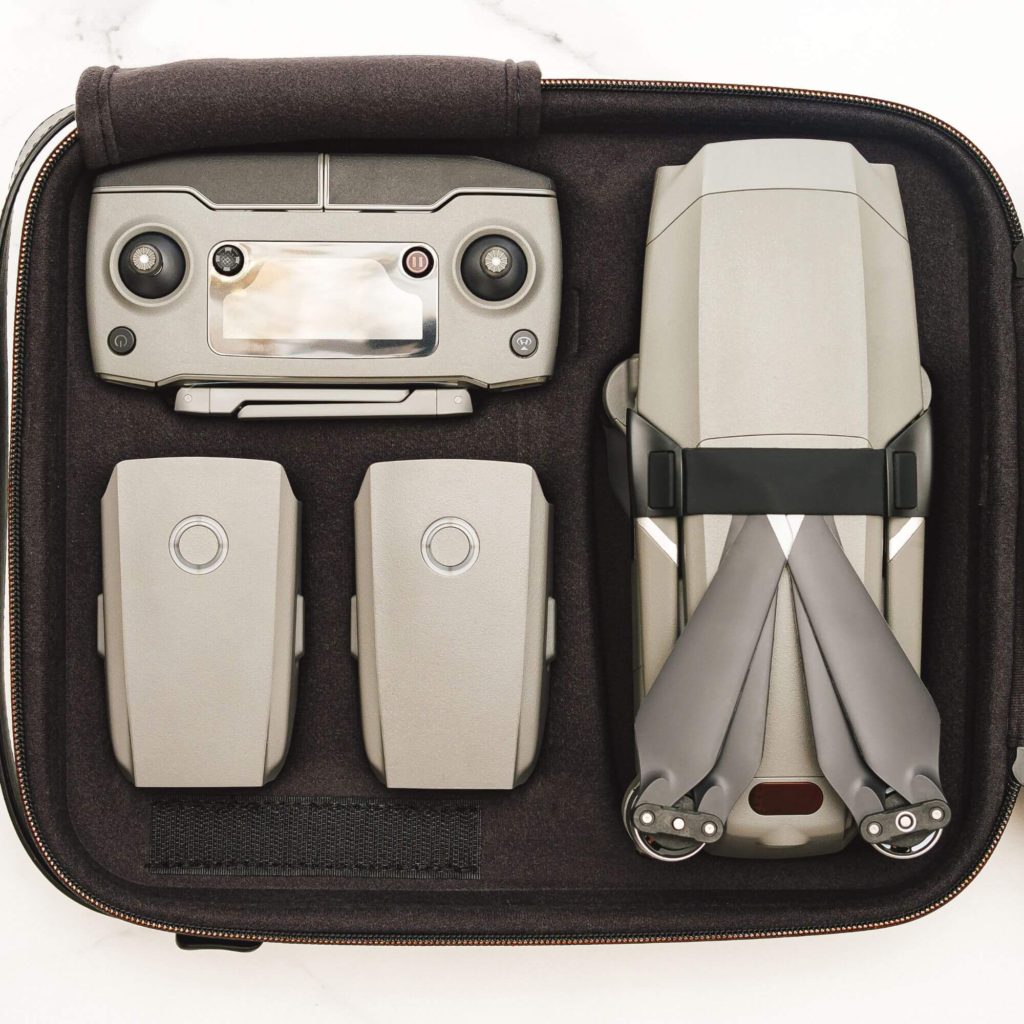
- Storage Case: Investing in a high-quality storage case or backpack specifically designed for drones is a wise choice. These cases are designed to provide optimal protection, with compartments and foam inserts that securely hold your drone, accessories, and spare parts. Look for a case that offers shock absorption, water resistance, and ample padding to safeguard your drone from accidental bumps, drops, and impacts.
- Remove Battery: Before storing or transporting your drone, always remove the battery. This not only prevents potential accidents but also helps preserve the battery’s lifespan. Batteries can discharge over time, even when not in use, and leaving them connected to the drone can lead to unnecessary battery drain or even damage. Store your batteries separately in a safe and cool location.
- Environment: Choose a suitable storage location for your drone. Opt for a cool, dry place with moderate temperatures to prevent excessive heat or cold exposure, which can negatively impact the drone’s components and battery. Avoid storing your drone in areas with high humidity or direct sunlight, as these conditions can cause moisture buildup, potential corrosion, or damage to sensitive electronic parts.
- Secure Transportation: When transporting your drone, it’s crucial to ensure it is securely fastened within the storage case or backpack. Use the provided straps, foam inserts, or custom compartments to keep the drone and its accessories in place, minimizing movement and potential impact during transit. This helps protect delicate components, such as the gimbal and camera, from unnecessary stress or damage.
- Additional Protection: Consider using additional protective measures, such as lens covers or propeller guards, to provide extra safeguarding during storage and transportation. Lens covers help protect the camera lens from scratches or dust accumulation, while propeller guards prevent the propellers from getting tangled or damaged. These accessories are especially useful when storing your drone alongside other items or when traveling in more challenging environments.
Remember, proper storage and transportation practices are essential for preserving the condition of your drone and ensuring it remains in optimal working order. By investing in a quality storage case, removing the battery, storing it in a suitable environment, securing it during transportation, and using additional protective measures, you can prolong the lifespan of your drone and enjoy countless safe and successful flights.
Note: Consider the DJI Mini 2 JSVER Hard Shell Storage Case for Mavic Mini 2/ Drone Storage Case, a durable and well-padded storage solution designed to accommodate your drone, accessories, and batteries securely. With its water-resistant construction and customizable foam inserts, it offers excellent protection for your drone during storage and transportation.
Conclusion
Ensuring proper maintenance of your drone is key to its longevity and optimal performance. By following the essential tips outlined in this guide, you can keep your drone in top shape and enjoy countless successful flights and stunning aerial photography sessions.
FAQ’s
It is recommended to perform a pre-flight check before each flight and conduct a thorough inspection and maintenance every 10 to 20 flights or as needed.
It is generally not recommended to use water for cleaning your drone. Instead, use a soft brush, microfiber cloth, or compressed air to remove dust and debris.
For long-term storage, it is best to store the battery at around 50% charge in a cool, dry place.
Different airlines may have specific regulations regarding drone transportation. Always check with the airline in advance and follow their guidelines for packing and carrying your drone onboard or in checked baggage.
Note: This post contains affiliate links. By making a purchase through these links, you can support our blog at no additional cost to you. We only recommend products and services that we genuinely believe in and have thoroughly researched.

